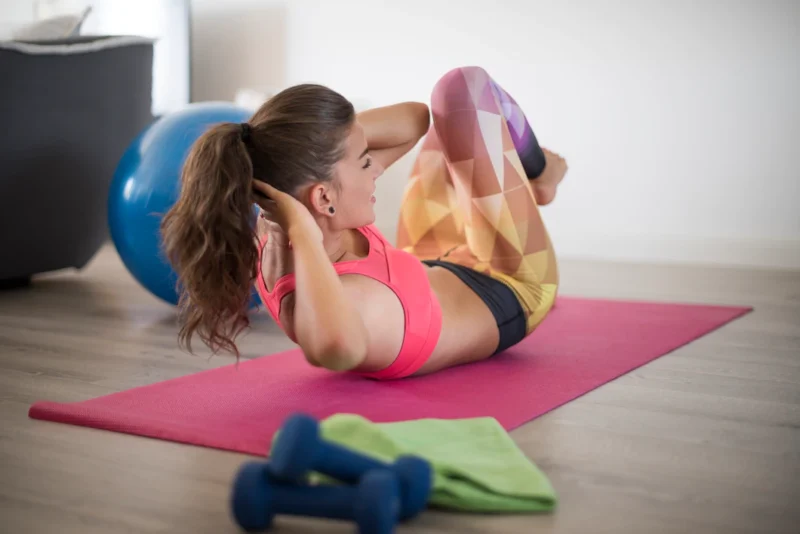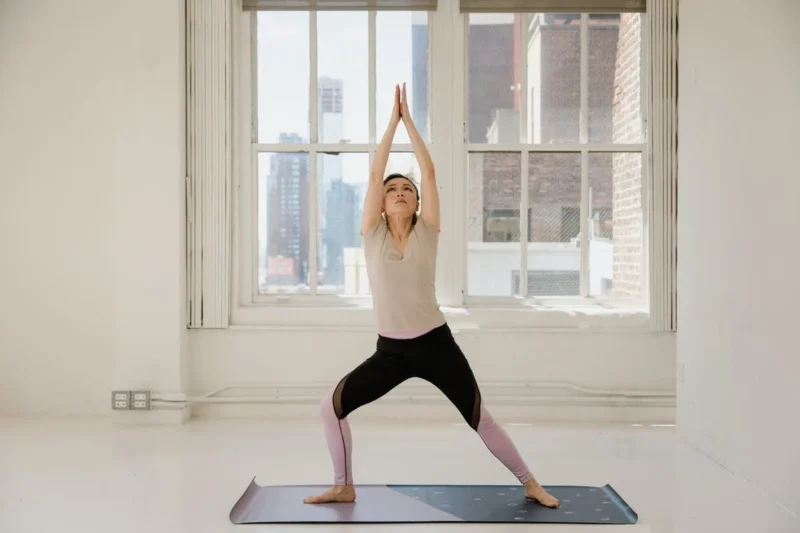Committing to a fitness routine is challenging, especially if starting from scratch. It gets even harder when you have to deal with the pain, fatigue, and other symptoms that can come with conditions like arthritis. You’ll struggle to get out of the house, make it to the gym, or even just walk around the block.
It doesn’t have to be that way, though. With patience, determination, and a little help, you can start and stick to a fitness routine that works for you. Here are ways to break down barriers to fitness.
1. Deal With the Hindrances

Ignoring the reason you keep avoiding exercise won’t make it go away. If pain is keeping you from moving, find ways to manage it. Also, don’t let fatigue dictate your level of activity. You may need to rest more often, but that doesn’t mean you can’t be active.
An excellent option to overcome these obstacles is to try out delta 8 carts from DeltaMunchies just before the workout. It will keep you focused and improve your mood while providing pain relief. You’ll also have the energy, making it easier to power through any workout. Start with a low dose and increase it gradually if needed.
2. Find an Activity You Enjoy
You’re more likely to stick with a workout if you’re doing something you enjoy. That doesn’t mean you have to love every minute of it, but you should at least not dread it. If you’re unsure where to start, try a few different things and see what works for you.
There are many options, from traditional exercises like running and weightlifting to more unique activities like rock climbing and dancing. If you love the outdoors, take advantage of hiking, biking, and kayaking.
The key is finding balance in your exercise habits by choosing something challenging but not so difficult that it could be discouraging. Also, note that monotony leads to boredom and quitting. Switch things up from time to time.
3. Set Realistic Goals

Don’t set yourself up for disappointment by setting goals that are impossible to achieve. If you’re starting from scratch, it’s unrealistic to expect to run a marathon in a few months.
Set smaller goals that you can realistically achieve and build up from there. A good rule of thumb is to start with a challenging but achievable goal within four to six weeks. Once you’ve reached that goal, set a new one.
Also, measure your progress in other ways besides the numbers on the scale. Track how you’re feeling, your energy levels, and how well you’re able to perform activities.
4. Get a Workout Buddy
Having someone to exercise with makes it more enjoyable and helps you stay on track. Join a sports team or a running club. There are also fitness classes offered at many gyms and community centers. Consider signing up for a personal training program if you prefer to work out independently.
A trainer can develop a workout plan tailored to your specific goals and help you stay motivated. They’ll also hold you accountable and provide support and encouragement.
5. Make Time for Exercise

It’s easy to make excuses when you’re busy, but you have to make time for exercise if you want to see results. Working out doesn’t have to take hours out of your day. Even a 20-minute walk can make a difference. If you can’t fit in a long workout, break it up into smaller chunks of time throughout the day.
Take a 10-minute walk in the morning and another in the evening. Additionally, do a few sets of push-ups and sit-ups during commercial breaks while watching TV. The important thing is to be consistent and make exercise a priority.
6. Rewards Keep You Motivated
Give yourself something to look forward to after a workout. It doesn’t have to be anything huge. A healthy snack or a few minutes of relaxation are enough to motivate you. You can even reward yourself with a particular outfit that’s a size or two smaller once you reach your goal weight.
7. Find a Workout You Can Do Anywhere

If you often travel or have a busy schedule, find a workout you can do anywhere. Many bodyweight exercises don’t require any equipment. These can be done in a hotel room, an office, or even in a park.
If you have access to a gym, find a routine easy to accomplish with little or no equipment.
This way, you won’t have excuses not to work out when you’re on the go. Some options include squats, lunges, push-ups, and crunches. Alternatively, bring along a jump rope or resistance bands.
8. Overcome Exercise Boredom
If you get bored quickly, find ways to mix up your workouts. There are many fitness apps and websites that offer workout ideas and routines. Create a circuit training routine with a variety of exercises.
Don’t be afraid to try new things. If you’re unsure how to do an exercise, look it up online or ask a trainer at the gym. There are also plenty of how-to videos available on the internet.
9. Set Yourself Up for Success

Set yourself up for success to make it more likely that you’ll stick with your workout routine. Choose workout clothes that are comfortable and make you feel good about yourself. Invest in a quality pair of shoes to avoid injury.
Also, create a playlist of upbeat music to listen to while working out. Music improves your performance and makes exercise more enjoyable.
10. Use Technology
Apps and online programs can help you reach your fitness goals. They track your progress, set goals, and find new workout ideas. Choose a program that’s right for you and easy to use.
An app that offers motivation, support, and accountability is more likely to help you succeed—some apps guide on doing specific exercises correctly.
11. It’s Doable

The key is to find something that works for you and make it a regular part of your routine.
It will motivate you to keep going and achieve your goals. Remember to document your progress to stay on track. Take progress photos and measurements. You’ll see the results motivating you to keep pushing. Soon you’ll break the barrier and encourage others to do the same.
Disclaimer:
This article is not medical advice. It is based on anecdotal user experience alone. If you are thinking about incorporating cannabis (delta-8 THC, delta-9 THC, or CBD) into your medicinal routine, please consult a healthcare professional. Do not stop taking any prescribed medications without first consulting your doctor.








